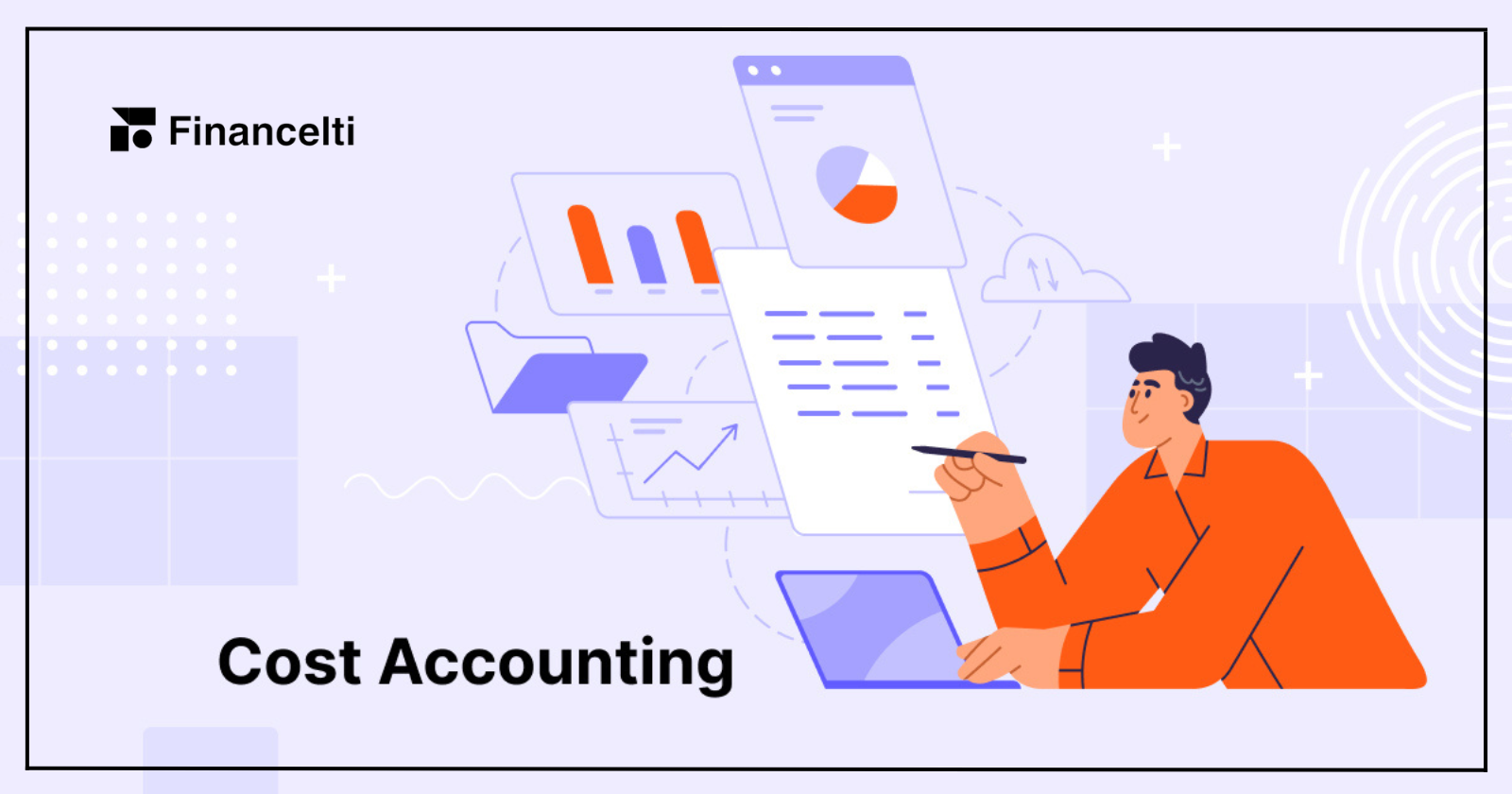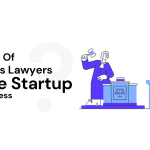Introduction to Cost Accounting
What is Cost Accounting? Cost accounting is a vital component of managerial accounting that plays a crucial role in capturing and analyzing a company’s total cost of production. By assessing both variable costs at each step of production and fixed costs like lease expenses, cost accounting provides valuable insights for internal decision-making. In this comprehensive guide, we will explore the definition of cost accounting, its objectives and advantages, different types of cost accounting, and more. Read More.
Table of Contents
Now, let’s delve into each section in detail.
What is Cost Accounting?
Cost accounting is a crucial branch of managerial accounting that deals with the process of analyzing, recording, and reporting a company’s total production costs for its products or services. It is an internal accounting system that focuses on tracking and allocating costs to different departments or units of a company, with the aim of providing management with accurate information about the costs associated with different products, services, and operations.
Unlike financial accounting, which is essentially geared towards external stakeholders such as investors and creditors, cost accountant is primarily intended for internal purposes. Its main objective is to provide management with useful insights into the costs of different business activities, so that they can make informed decisions about pricing, production, and profitability.
Cost accounting involves several key processes, including cost classification, cost allocation, cost measurement, and cost analysis. These processes help managers to identify and control costs, as well as to make effective decisions about resource allocation, product pricing, and cost reduction strategies.
Cost accountant is an essential tool for modern businesses seeking to optimize their operations and improve their bottom line. By providing management with accurate and timely information about costs, cost accountant enables companies to make informed decisions about resource allocation, pricing, and profitability, ultimately leading to greater success and sustainability in the long term.
The purpose of cost accounting is to help companies make informed decisions regarding cost control, budgeting, pricing, and overall business strategy. By tracking and analyzing both variable and fixed expenses, cost accounting enables organizations to identify areas of inefficiency, reduce costs, and optimize profitability.
Importance of Cost Accounting
Cost accounting is an essential aspect of business operations that enables organizations to gain valuable insights into their cost structure and resource utilization. It serves as a powerful tool that helps management make informed decisions based on accurate data, leading to better financial control, improved performance, and increased competitiveness. By adopting effective cost accounting practices, businesses can identify inefficiencies, streamline operations, and optimize costs, which can ultimately help them achieve their strategic objectives and long-term goals.
Objectives of Cost Accounting
Cost Control and Reduction
Cost accounting is an essential tool for achieving cost control and reduction in businesses. It involves a systematic process of tracking and analyzing costs to identify areas of unnecessary spending or inefficiency. This information helps management to take appropriate measures to reduce expenses and improve the company’s financial performance. By setting budgets, monitoring expenses, and implementing cost-saving strategies, cost accounting enables businesses to optimize their operations and achieve their financial goals.
Budgeting and Planning
Cost accounting is an essential component of the budgeting and planning processes for companies of all sizes. It enables companies to gather accurate cost information, which in turn helps them create realistic budgets, allocate resources effectively, and set achievable financial goals. By providing management with comprehensive financial data, cost accounting enables them to make informed decisions about resource allocation, investment planning, and overall business strategy. This information can help companies optimize their operations and achieve their financial objectives.
Pricing Decisions
Cost accounting plays a crucial role in determining the price of products or services. An in-depth analysis of the cost of production and associated expenses enables companies to establish pricing strategies that ensure profitability while remaining competitive in the market. Cost accountant provides management with a clear understanding of the cost structure of each product or service, enabling them to set prices that effectively cover costs and generate desired profit margins. This helps businesses make informed decisions and achieve financial success.
Advantages of Cost Accounting
Enhanced Decision-Making
Cost accounting is a valuable tool that offers accurate and relevant information to aid in decision-making. It involves analyzing costs and identifying cost drivers, which enables management to make informed choices about various aspects of the business such as resource allocation, product pricing, process improvement, and overall business strategy. By evaluating the financial implications of different options, cost accounting helps companies select the most cost-effective and profitable course of action. In summary, cost accounting is an essential aspect of financial management that can significantly impact the success of a business.
Improved Resource Allocation
Cost accounting is a strategic tool that enables companies to optimize their resource allocation by identifying areas of inefficiency or excess spending. With the help of cost accounting, management can track and analyze costs to identify activities or processes that consume excessive resources. By taking corrective measures, companies can allocate resources more effectively leading to improved operational efficiency, reduced waste, and better utilization of available resources. This not only helps businesses to cut down on costs but also improves their profitability in the long run.
Increased Profitability
Managing costs effectively is a crucial aspect of running a successful business. Cost accountant practices can play a significant role in improving a company’s profitability by keeping track of expenses and controlling them. By closely monitoring costs, companies can identify areas where they can save money, eliminate unnecessary expenditures, and optimize their operations to increase their profit margins. Cost accountant is an essential tool that businesses can leverage to make informed decisions and improve their financial performance.
Cost Classification in Cost Accounting
Direct Costs
Direct costs are those expenses that are specifically identified as being directly related to the production of goods or the delivery of services. These expenses can be traced directly to the product or service and are essential in determining the total cost of production. Direct costs include direct materials and direct labor. Direct materials are the raw materials or components that are used in the production process.
These materials can be easily traced to the finished product as they are an integral part of the production process. Examples of direct materials include wood, steel, and plastic used in furniture manufacturing.Direct labor, on the other hand, refers to the wages or salaries paid to the employees who are involved in the production process or service delivery. These employees are typically engaged in the manual or physical work required to create the product or service. Examples of direct labor include assembly line workers, machine operators, and construction workers who are directly involved in the production process.
Indirect Costs
Indirect costs, also referred to as overhead costs, are a vital component of any business’s financial structure. These expenses are not directly related to the production of a specific product or service but are incurred to support the overall production process or business operations. Indirect costs include a wide range of expenses, such as rent, utilities, depreciation, and administrative expenses.
Rent is the cost of using a physical space for business operations and can be a significant expense, especially in high-rent areas. Utilities include the cost of electricity, gas, and water, used to power and maintain the business. Depreciation is the reduction in the value of an asset over time and is a common indirect cost for businesses that rely on machinery or equipment.
Administrative expenses, such as salaries of support staff and office supplies, are also indirect costs that contribute to the smooth running of a business. Understanding and managing indirect costs is crucial for businesses to maintain profitability and financial stability.
Fixed Costs
Fixed costs are a type of business expenses that remain stable and constant over a certain period of time, regardless of the level of production or sales volume. These costs do not fluctuate or change with the changes in production or sales activity. This means that the amount of fixed costs incurred by a business remains the same, regardless of whether the business produces more or less.
Examples of fixed costs include rent, which is the amount of money paid for the use of a business premises; salaries of permanent employees, which refers to the amount of money paid to full-time employees on a regular basis; insurance premiums, which are payments made to insurance companies to protect a business against potential losses or damages; and property taxes, which are taxes levied on the value of business assets such as land, buildings, and equipment.
It is important for businesses to identify their fixed costs accurately, as it helps in determining the minimum amount of revenue required to cover these expenses and break even. Understanding fixed costs also helps businesses plan their budget and financial projections effectively.
Variable Costs
Variable costs are a type of expense that changes in direct proportion to the level of production or sales volume. In other words, as the activity level increases, so do the variable costs. Similarly, when the activity level decreases, variable costs proportionately decrease. Some examples of variable costs include the cost of raw materials, direct labor wages, and sales commissions.
These costs tend to be incurred only when there is a corresponding level of activity, which means that variable costs can be directly attributed to the production or sale of a product or service. It is important to note that variable costs are different from fixed costs, which remain constant regardless of the level of activity. Understanding the distinction between variable and fixed costs is crucial for businesses to make informed decisions about pricing, production, and profitability.
Operating Costs
Operating costs are a crucial aspect of running a business and refer to the expenses incurred by a company in its day-to-day operations. These costs are not directly related to the production of goods or delivery of services, but rather represent the expenses incurred to keep the business running smoothly.
Examples of operating costs may include but are not limited to marketing expenses, employee training costs, rent, utilities, office supplies, and travel expenses. These costs can add up quickly and have a significant impact on a company’s bottom line, which is why it is essential to keep them in check and manage them effectively.
Cost Accounting Methods and Systems
Standard Costing
Standard costing is a widely used method in cost accounting that involves setting predetermined standards for various cost elements, such as materials, labor, and overhead. These standards serve as benchmarks against which actual costs are compared. Variances between standard costs and actual costs are analyzed to identify areas of inefficiency or improvement. Standard costing helps companies monitor costs, control expenses, and improve overall cost efficiency.
Activity-Based Costing (ABC)
Activity-Based Costing is a cost accounting method that assigns costs to specific activities or processes based on their consumption of resources. ABC recognizes that not all activities consume resources at the same rate and allocates costs accordingly. By identifying cost drivers and their impact on different activities, companies can gain a better understanding of their cost structure and make more accurate pricing and resource allocation decisions.
Marginal Costing
Marginal costing, also known as cost-volume-profit analysis, focuses on analyzing the impact of changes in production volume or sales on costs and profits. Marginal costing helps companies determine the break-even point, calculate contribution margins, and assess the profitability of different products or services. By understanding the relationship between costs, volume, and profits, management can make informed decisions about pricing, sales targets, and production levels.
Lean Accounting
Lean accounting is a cost accounting approach that aligns with the principles of lean manufacturing or lean management. It aims to eliminate waste, improve efficiency, and maximize value creation in the organization. Lean accounting focuses on providing accurate and timely information for decision-making, simplifying cost tracking processes, and promoting a culture of continuous improvement. By adopting lean accounting practices, companies can streamline operations, reduce costs, and enhance overall organizational performance.
In the next section, we will explore the cost accounting process and its key steps.
Cost Accounting Process
The cost accounting process involves several key steps that help companies track, analyze, and control costs effectively. Let’s take a closer look at each step:
Cost Classification and Recording
The first step in the cost accounting process is to classify and record costs according to their nature and function. This involves categorizing costs as direct or indirect, variable or fixed, and assigning them to specific cost objects, such as products, services, or activities. Cost accountants use various cost allocation methods and accounting systems to accurately record and track costs.
Cost Analysis and Allocation
Once costs are classified and recorded, cost accountants analyze the cost data to identify cost drivers and allocate costs to the appropriate cost objects. This involves identifying the activities or processes that consume resources and assigning the costs associated with those activities to the corresponding cost objects. Cost allocation methods may include direct tracing, cost allocation based on usage or time, or activity-based costing techniques.
Cost Control and Performance Evaluation
Cost control is a critical aspect of cost accounting. Once costs are analyzed and allocated, companies can implement strategies to control and reduce costs. This may involve setting cost reduction targets, implementing cost-saving initiatives, improving operational efficiency, and monitoring cost variances. Cost accountants evaluate performance by comparing actual costs with budgeted or standard costs, identifying areas of improvement, and taking corrective actions to optimize cost efficiency.
Types of Cost Accounting
Job Costing
Job costing is a cost accounting method used in industries that produce unique or customized products or services. It involves allocating costs to specific jobs or projects and provides insights into the profitability of each job. Job costing is commonly used in construction, manufacturing, and professional services industries.
Process Costing
Process costing is a cost accounting method used in industries that produce large quantities of similar products. It involves allocating costs to different stages or processes of production, rather than to individual products. Process costing is commonly used in industries such as chemical processing, food manufacturing, and oil refining.
Standard Costing
Standard costing is a cost accounting method that involves setting predetermined standards for various cost elements, such as materials, labor, and overhead. These standards serve as benchmarks against which actual costs are compared, allowing companies to identify variances and take corrective actions. Standard costing is widely used in industries where production processes are standardized and predictable.
Activity-Based Costing
Activity-Based Costing (ABC) is a cost accounting method that focuses on identifying and allocating costs to specific activities or processes based on their consumption of resources. ABC provides a more accurate and detailed understanding of the cost structure of products, services, or business processes. It is particularly useful in industries with complex cost drivers and diverse product lines.
Lean Accounting
Lean accounting is a cost accounting approach aligned with the principles of lean management and lean manufacturing. It aims to eliminate waste, improve efficiency, and maximize value creation. Lean accounting focuses on providing relevant and timely cost information for decision-making, simplifying cost tracking processes, and promoting continuous improvement. It is widely used in organizations implementing lean practices to enhance operational performance and cost efficiency.
By understanding the different types of cost accounting methods, companies can choose the most appropriate approach to suit their specific needs and industry requirements. Each method offers unique insights and benefits to help organizations optimize their cost management practices.
This comprehensive guide has provided an in-depth understanding of cost accounting, its objectives, advantages, classification of costs, different methods and systems, challenges, and the role it plays in strategic decision-making. By implementing effective cost accounting practices, companies can gain better control over their costs, improve profitability, and achieve long-term success in today’s competitive business environment.
Challenges in Cost Accounting
While cost accounting offers numerous benefits, it also presents certain challenges that organizations need to address. Some of the key challenges in cost accounting include:
Accurate Cost Allocation
Accurate cost allocation is crucial for effective cost accounting. However, determining the appropriate allocation base or cost driver for overhead costs can be complex and subjective. Companies need to establish robust allocation methods and systems to ensure accurate cost allocation and avoid misinterpretation of cost data.
Integration of Technology
The future of cost accounting is closely intertwined with technological advancements. Companies need to embrace technologies like artificial intelligence, big data analytics, and automation to enhance cost accounting processes. Integrating these tools can streamline data collection, analysis, and reporting, enabling more accurate and timely cost information for decision-making.
Adapting to Changing Business Environment
Cost accounting practices need to adapt to the changing business environment. As companies face evolving market conditions, global competition, and technological disruptions, cost accountants must stay updated with industry trends, regulatory changes, and emerging cost management techniques. Flexibility and agility in cost accounting are essential for organizations to remain competitive and resilient.
FAQs
What is the difference between cost accounting and financial accounting?
Cost accounting and financial accounting serve different purposes and cater to different audiences. Cost accountant focuses on analyzing and controlling costs within an organization, providing internal management with information for decision-making. Financial accounting, on the other hand, focuses on preparing financial statements for external stakeholders, such as investors, lenders, and regulatory authorities, to assess the financial performance and position of the company.
Can cost accounting be used for tax purposes?
Cost accounting is primarily used for internal purposes and is not specifically designed for tax reporting. While cost accounting provides valuable cost information that may be relevant for tax planning and analysis, companies typically rely on financial accounting methods to fulfill their tax reporting requirements.
How does cost accounting contribute to strategic decision-making?
Cost accounting plays a crucial role in strategic decision-making by providing accurate cost data and insights. By analyzing costs and cost drivers, companies can evaluate the profitability of different products, services, or business segments, make informed pricing decisions, identify cost-saving opportunities, and allocate resources effectively. Cost accounting helps management align their strategic goals with cost management strategies, enabling them to make data-driven decisions that drive long-term success.
Conclusion
In conclusion, cost accounting is a fundamental practice that enables organizations to track, analyze, and control costs effectively. It provides valuable insights into a company’s cost structure, facilitates decision-making, and helps optimize profitability. By implementing cost accounting methods and systems, companies can achieve better financial control, improve resource allocation, and enhance overall operational efficiency. With the challenges and opportunities presented by evolving technologies and changing business environments, cost accountants must adapt and embrace new tools and techniques to stay ahead in the dynamic world of cost accounting.
Also Read : What is Managerial Accounting?






